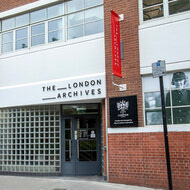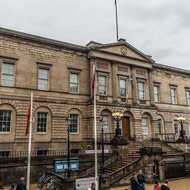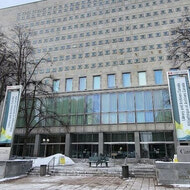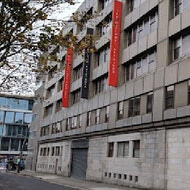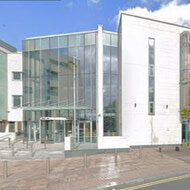Research & Projects
Introduction
We hope that you enjoy this page which features a series of profiles, added periodically throughout the year, highlighting the important contribution that BIFHSGO and its volunteers have made over the past 30 years to collect and disseminate research on British home children and on military and migration subjects.
The inaugural article on British home children (below) describes the history of this long-term research project and the important contribution that Patricia Roberts-Pichette has made over the past 23 years. Patricia has supported BIFHSGO in a number of ways: first as a dedicated volunteer; then as a Board member with responsibility for our research; and latterly as an author, educator, and internationally recognized historian. Patricia has specialized in research on the children who were brought to Canada through the (Middlemore) Children’s Emigration Homes (CEHs). She coordinated the work of volunteers to gather and transcribe data from records and developed the CEH database which, along with its supporting Guide, is in the Name Index. Patricia has also written a number of articles, some of which are featured on our Home Children Research resource page [link pending], and has published a book on the subject. BIFHSGO is grateful to Patricia for this exceptional service to our organization.
Home Children
|
“Home children” is a Canadian term, used to describe more than 100,000 of the very poorest children who were brought from the U.K. to Canada between 1869 and 1948 and settled mainly with rural families in what was known as the assisted juvenile emigration movement. The children, mostly from the slums of British cities and towns, were taken in by about 50 approved, privately-owned juvenile emigration agencies where they received training, health and fitness care before emigration. By 1900 “home children” probably was in everyday Canadian use, but it first appeared in print in The Children’s Homefinder (1913) by Lilian Birt. |
Home Children: BIFHSGO’s first long-term research project
Since the mid-1990s, volunteers of the British Isles Family History Society of Greater Ottawa (BIFHSGO) have been transcribing the names of home children, starting with hand-written documents (until typewritten documents were available) dating from 1869 held at Library and Archives Canada (LAC). In addition, a few volunteers, through background research and by answering the untold numbers of Canadian and world-wide queries, have acquired specialist information about the legal and social backgrounds and experiences these children had before leaving the U.K. and after their arrival in Canada.
David Lorente, the son of a home child and founder of Home Children Canada in 1991 with his wife Kay, both BIFHSGO Hall of Fame recipients (2000), 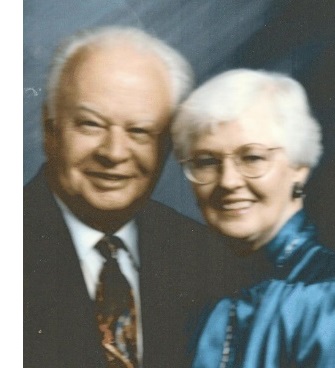 were determined to learn the names of home children brought to Canada and bring their history and stories to the attention of the Canadian public. They first presented their ideas to the Ottawa Branch, Ontario Genealogy Society (OGS) and became known there as the home children champions.
were determined to learn the names of home children brought to Canada and bring their history and stories to the attention of the Canadian public. They first presented their ideas to the Ottawa Branch, Ontario Genealogy Society (OGS) and became known there as the home children champions.
BIFHSGO, founded in 1994, had many members who were already volunteers at the Church of Christ of Latter-day Saints (LDS) Family History Center, where they learned the basics of transcribing names for making lists and indexes. The Lorentes put their ideas publicly before BIFHSGO members during the society’s foundation discussions, gave two presentations on home children at its first conference in September 1995, and asked for volunteers. John Sayers, a long-time volunteer at the LDS Family History Centre and a BIFHSGO Hall of Fame recipient  (2001), responded. He soon formed a group of BIFHSGO and OGS volunteers to extract names of home children from shipping manifests held by LAC. The BIFHSGO Board recognized it needed a long-term research focus and because of the research facilities in Ottawa and the enthusiasm of the Lorentes, Sayers and the volunteers already extracting names from shipping records, chose “home children” as its special long-term research project.
(2001), responded. He soon formed a group of BIFHSGO and OGS volunteers to extract names of home children from shipping manifests held by LAC. The BIFHSGO Board recognized it needed a long-term research focus and because of the research facilities in Ottawa and the enthusiasm of the Lorentes, Sayers and the volunteers already extracting names from shipping records, chose “home children” as its special long-term research project.
An agreement between LAC and BIFHSGO resulted in the extracted names—the initial section of BIFHSGO’s long-term research project on home children—becoming the base of the LAC home children database. The first results (names of home children who arrived in Canada during 1870) were published in Anglo-Celtic Roots, Volume 3, Number 3, 1997. BIFHSGO’s work ended on this section of the project when names of home children had been extracted from the manifests of all incoming British ships in the LAC collection between 1869 to 1935 (the last year in LAC’s collection). Today LAC continues to add information to this database and BIFHSGO volunteers continue extracting information on home children from other federal government records.
The Children’s Emigration Homes
In 1993 the records of the Children’s Emigration Homes (CEH)—an assisted juvenile emigration home founded in 1872 by John Throgmorton Middlemore of Birmingham, U.K.—were microfilmed on behalf of the Australian Joint Copying Project and the National Archives of Canada (now LAC) with the kind permission of the Middlemore Trust, Birmingham, England. The Australian share of the microfilms is archived at the Australian National Library, while the Canadian share of the microfilms, about 120 reels, is archived at LAC as “Collection MG28-I492, the Middlemore Children’s Emigration Homes fonds.”
The second part of BIFHSGO’s long-term home children project was started in 2001 with the extraction of CEH children’s names and records from LAC Collection MG28-I492. In the early 2000s the Middlemore Trust deposited the CEH records in a public archive in Birmingham now known as the Wolfson Centre, the only assisted juvenile emigration agency to take this action.
Middlemore considered that expatriation was too strong a remedy for cases of ordinary misfortune and only accepted the very worst cases. With his staff, and after the training and medical care of children taken into the CEH (most under 14 years of age), in 1873 Middlemore brought his first party of children to Canada for settlement from temporary receiving homes in Toronto and London. In 1893 Middlemore made the Maritime provinces his only settlement area.
Children’s Emigration Homes Records: indexing project
In early 2001, the LAC Collection MG28-I492 documents over 100 years old were opened to the public. When this was brought to BIFHSGO’s attention, long-time BIFGHSO volunteer and Hall of Fame recipient (2007), Dr. Patricia Roberts-Pichette 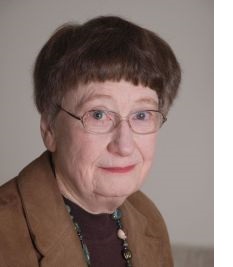 volunteered with about 60 BIFHSGO volunteers and friends to extract the names and references of CEH children settled in Canada from 93 reels of the 120-reel LAC collection, and from documents not part of that collection—a total of 12 different files. This project started in 2001 and is ongoing.
volunteered with about 60 BIFHSGO volunteers and friends to extract the names and references of CEH children settled in Canada from 93 reels of the 120-reel LAC collection, and from documents not part of that collection—a total of 12 different files. This project started in 2001 and is ongoing.
Middlemore’s CEH: the work of Dr. Patricia Roberts-Pichette
In March 2002 the nominal index for CEH children emigrated to Canada between 1873 and 1880 appeared on the BIFHSGO website and was completed when the names of children sent abroad each year until May 1932 were added (the last year the CEH send children to the colonies). The CEH brought approximately 5,200 children to Canada. With all the children’s names extracted, Roberts-Pichette completed a nominal index on the BIFHSGO website in 2003. About 2019 Roberts-Pichette added the references for each child on the nominal index, creating the Name and Reference Index of the Children’s (Middlemore) Emigration Homes and Its Sources, or CEH Index that now forms part of BIFHSGO’s Name Index. She has also produced a comprehensive Research Guide to Children’s (Middlemore) Emigration Homes Index that describes the contents of the 12 files, tips on solving problems and locations where the references may be seen or copies obtained. Sparked by this work, Roberts-Pichette has gained a unique perspective on the work of the CEH from the unlimited access she had to all relevant CEH files up to 1941 and to personal communications with Middlemore family members, home children, and descendants of CEH children.
In her comprehensive book, which evolved from her research, Great Canadian Expectations: The Middlemore Experience (2016), Roberts-Pichette revealed that the experiences of CEH children were mainly positive and that most thrived in Canada. She also considers that, contrary to current popular opinion, the experiences of the children from the well-known assisted juvenile emigration agencies were similar.
According to Charlene Elgee, Roberts-Pichette reviewed “the legal framework [of the assisted juvenile emigration movement], contemporary social movements like eugenics, political movements and reactions, the prejudices and backlashes against immigrants, the social climate of both the U.K. and Canada at the time, the effects of the Great War, and the evolution of the relationship between the British government and its colonies.” (See Canadian Immigration Historical Society, Bulletin 82, September 2017, pages 15-16). Taken together with what she learned from the CEH and other records, Roberts-Pichette concluded that John T. Middlemore’s motivations were truly altruistic and, compared with late 1800s’ and early 1900s’ contemporary social practices, he was far ahead of his time. For further information on Middlemore and his children's emigration homes, more information will be available on the “Resources” tab under “Home Children Research” shortly.


